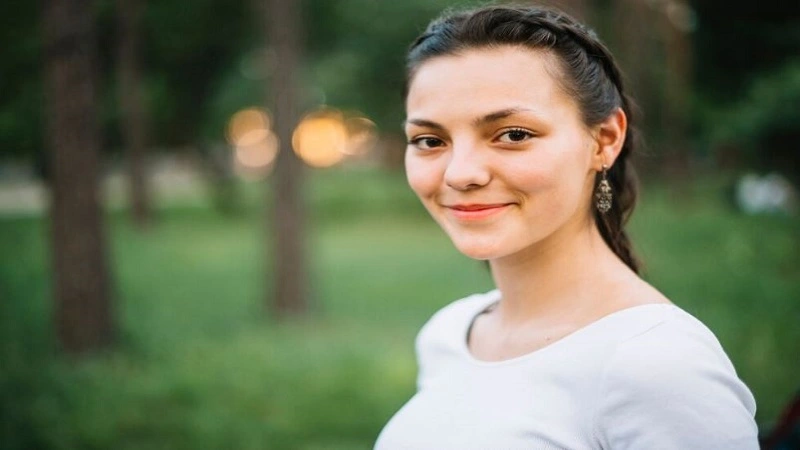“Light is the language of photography.” – George Eastman, founder of Kodak. Lighting is one important aspect of taking great headshots. A lot of times in professional photography there are discussions about whether to use natural or artificial light with outdoor headshots as an example. Depending on what kind of light you choose, your finished picture may look more or less professional, authentic, or neat. But which one is better for outdoor headshots? So let’s analyze the advantages and disadvantages of each type and how they influence our final photographs.
Natural Light: The Power of Nature’s Soft Glow
Advantages of Natural Light in Outdoor Headshots
One of natural light’s biggest advantages is its ability to create a soft, flattering look. Sunlight, especially during the “golden hour” (shortly after sunrise or just before sunset), provides a warm, even glow that reduces hard shadows and highlights, making it ideal for portrait photography.
In addition, according to American Psychological Association research, natural light can have a beneficial effect on moods which would help the subjects feel more comfortable and confident during their shoots. This relaxed attitude often results in more genuine headshots that are increasingly attractive in today’s professional world.
Cost-effectiveness is yet another prominent advantage of utilizing natural light. Outdoor headshots that are taken under the sun don’t require costly illumination gadgets. This can be a plus for both the picture taker and the one who needs photos.
Drawbacks of Natural Light in Outdoor Headshots
That being said, natural light has its drawbacks as well. The weather is unpredictable — and what may seem like ideal shooting weather can quickly turn into a nightmare for photographers dealing with cloudy skies, rain, or bright mid-morning sun. The brightness of the sun also creates undesirable shadows, especially when shooting midday (or when the light is directly overhead).
Moreover, natural light comes time-constrained. You may only have an hour or two of perfect light, particularly during the golden hour, which leaves little flexibility in scheduling outdoor headshots.
Artificial Light: Consistency and Control
Advantages of Artificial Light in Outdoor Headshots
On the other hand, the advantage of artificial light is the control and consistency it provides. Photographers can handle lighting in such a way that they have the desired result regardless of time or weather with the right setup. A photographer can control how intense or direct the light is which helps in avoiding overexposure and harsh shadows.
For outdoor portraits, portable lighting like softboxes and ring lights can mimic the softness of natural light while giving more predictability. This is especially important for jobs where constancy is vital; thus, professional photographers can produce quality pictures irrespective of exterior circumstances.
According to specialists from the Professional Photographers of America (PPA), artificial illumination also permits innovative adaptability. Photographers can modify the hue temperature, and direction of light, and even employ different sources of light to produce an extremely designed or formal photograph. Attaining this degree of customization just using natural sunshine is usually quite difficult.
Drawbacks of Artificial Light in Outdoor Headshots
But there are some negatives to artificial light. Firstly, the process of setting up artificial light can take longer. You need to factor in your light stands, reflectors, battery packs, and power sources. You may be limited (even further) in your mobility, too. Secondly, unlike light from a window, artificial light always looks kind of artificial. While the pursuit of photographic verisimilitude is certainly not the point in many artistic endeavors, there is something innately appealing about taking a portrait with minimal fuss and a maximal amount of soft, filtered daylight.
About outdoor headshots, soft, diffused, natural light has become somewhat synonymous with a pleasant atmosphere, particularly if the goal is to capture a subject in a natural, relaxed environment. The overly well-lit look that can accompany a photograph shot under great not-so-great artificial light is often harsh and tends to look like it was planned, rather than taken incidentally.
The Verdict: Which is Better for Outdoor Headshots?
The choice between artificial and natural illumination in outdoor portrait photography relies heavily on your desired result, as well as practical elements such as time of day and climate conditions. For example, natural light has its distinct advantage of an inexplicable softness that is almost impossible to imitate during perfect hours for taking pictures. This outcome, however, seems to be much less stable compared with the latter one.
On the contrary, artificial light gives you more latitude concerning both its level and timing thus allowing you to assure that all your snapshots are professional. In those times when outside illumination is not appropriate due to unfavorable weather conditions or if you do not have enough power in some other way then it becomes a useful instrument.
Incorporating Both for Best Results
When you want the greatest from two dimensions, blending natural and artificial light sources is one of the most effective techniques for photographers. One way is using reflectors (where certain surfaces reflect whatever light falls on them) which help in reducing shadows while improving brightness by making the subject shine more brightly. Also with the use of these artificial lights after there’s some outside sunlight fading, then you get outdoor house photography most especially later in the evening.
Fact: According to Digital Photography School, pictures taken outside with mixed methods of shadows and glares merge well making them adaptable to different environments easily.
Conclusion
In conclusion, selecting natural or artificial light for outdoor headshots boils down to the needs of the shoot. Natural light gives a beautiful, organic appearance that can be hard to achieve, while artificial light gives you controlled and consistent results. Knowing the benefits and drawbacks of each style of lighting will help you ultimately make an informed decision.
